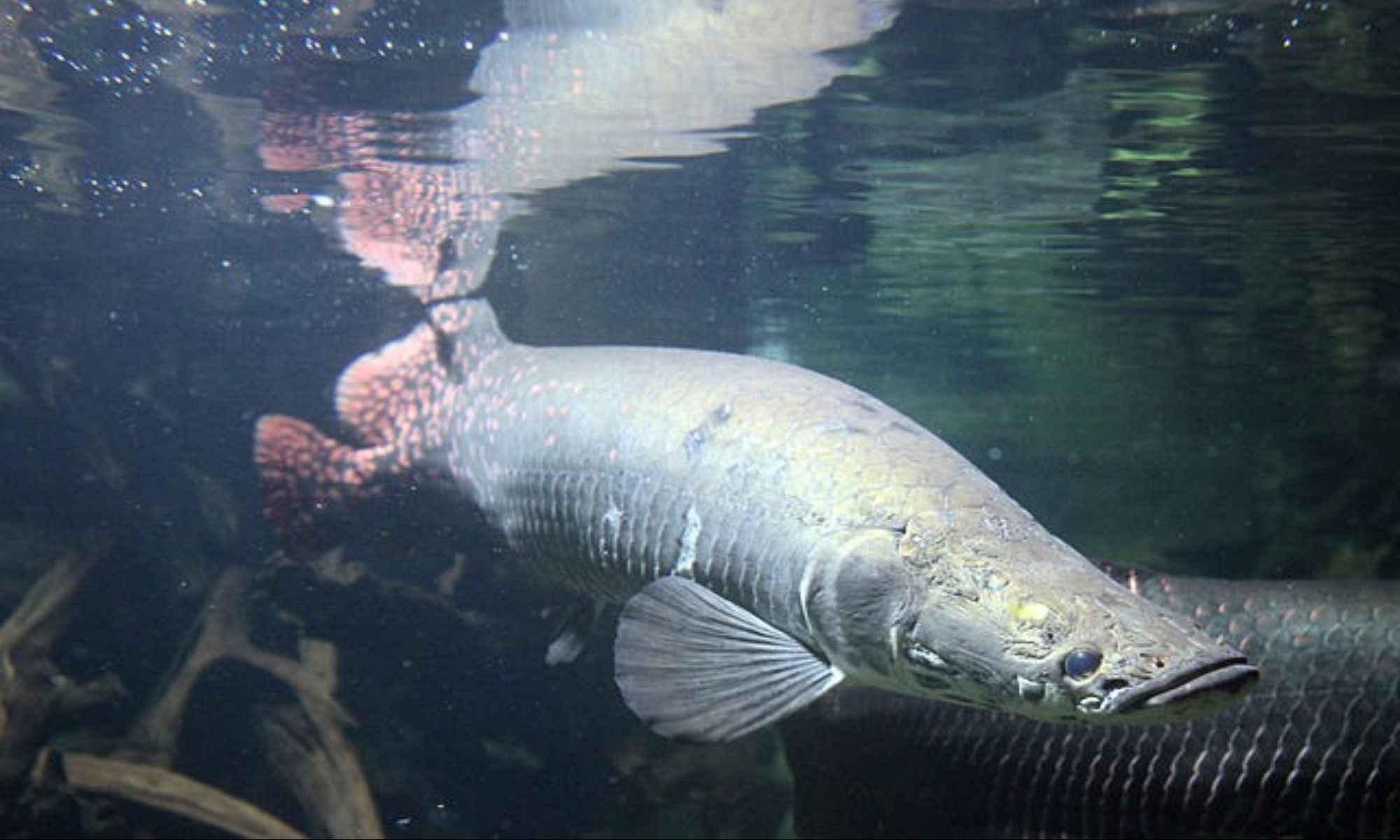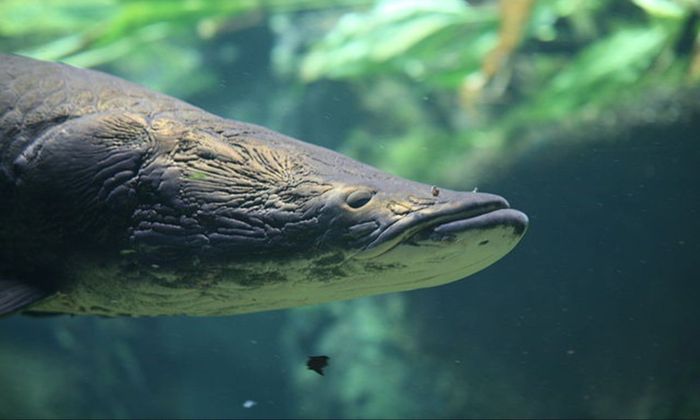Arapaima: Are They Dangerous?
Get to know the Arapaima, the largest freshwater fish in the world, and find out if they're actually dangerous.

The Arapaima is one of the most legendary and interesting fish in the world because of how they’re built and the myth surrounding them. Many people wonder if these natives of the Amazon Rainforest waters are dangerous. Are they a predator against humans? Do they eat humans? Here’s what you need to know about these exotic fish species:
Getting to Know the Arapaima

The Arapaima (Arapaima gigas) is the world’s largest freshwater fish and living fossil. Also known as the paiche or the pirarucu in Peru and Brazil, these massive fish are air-breathing residents of the rainforest rivers and nearby lakes and swamps of South America’s Amazon River Basin. They’re mainly found in Peru, Brazil, and Guyana. These monster fish can grow up to 15 ft long and weigh up to 440 lbs. On average, you’ll find one about 6 ft long and 200 lbs. They’re not just massive; they exhibit the fastest growing rate of any fish, making them ideal for farming.
What does the giant fish look like? Arapaimas have narrow, copperish-green heads, upturned mouths, and scaly, sleek black bodies with a white middle. Towards their massive red tails, a dorsal fin stretches along their backs. Their Brazilian name originates from the Tupi language, which roughly translates to ‘red fish.’

Because they are air-breathing fish, the South American creature can only stay underwater for 10 to 20 minutes. Only young arapaima fish have gills. You can commonly find them waiting near the water’s surface before coming up to breathe. They have a modified swim bladder that acts as their lung, opening to the fish’s mouth. This causes them to produce a noisy, distinctive sound that sounds like a gulp or cough that can be heard from far away.
The Arapaima uses a ‘gulper’ feeding strategy, opening its large mouth and creating a vacuum that sucks in any nearby prey. They are bony tongue fish as they use their tongues to crush food against the roof of their mouths. These predatory creatures survive mainly on smaller fish and eat fruits, seeds, and insects.
Arapaimas are excellent food fish as they are sometimes referred to as the ‘cod of the Amazon.’ They have been a major source of protein in the Amazon for centuries. Locals often preserve the fish’s meat by salting and drying it.
These large fish have been introduced to other rivers in tropical South America as aquaculture species. In Southeast Asia, particularly Thailand and Malaysia, it has also been promoted as a sport fishing target.
Now that you have an idea of its sheer size and unique qualities, you might wonder if the so-called ‘river monster’ is dangerous.
The Legend and Myth Behind the Arapaima
The legend behind the Arapaima comes from an old Brazilian myth. It is said that Pirarucu, the taunting and disrespectful son of an Amazon chief, was punished for his disobedience and was cast down to the depths of the river by the gods. Through a strange transformation, he evolved into an arapaima. It’s believed the creature is possessed by an evil spirit, able to pull men from their boats and take them to death.

While there are many stories of the fish attacking anglers and fishermen, they are more vulnerable to human predators. They have been overharvested for their meat and flesh and are easily targeted using harpoons and spears. The real danger they pose is when they try to defend themselves.
Fishing boats in the Amazon are tiny compared to the vessels we use in North America, therefore, more unstable. Arapaimas can easily tip the boat because they stay in shallow water. If they feel cornered and threatened, arapaimas will leap out of the water with lightning speed and strike with a violent force that is most likely the cause of the unfortunate casualties we hear about. A blow from the fish is enough to knock a person out of the boat and leave them unconscious. This means the danger of drowning or being eaten by native carnivorous fish like piranhas is a possibility. Most cases of anglers and fishermen dying due to an arapaima attack were because they were alone. Contrary to popular belief, arapaimas do not eat people.
In conclusion, humans are the largest threat to one of the largest fish. Attacks by predatory fish are rare, especially following the decline of the arapaima population due to overfishing.
Fishing Near South America
Arapaimas are native to South America, where you can access fishing trips in the Gulf of Mexico from the United States. Texas fishing charters like Texas Coastal Adventures take you targeting fish from the Gulf Coast. Serigne's Fishing Charters is one of the best Louisiana offshore fishing charters to let you land trophy fish from Gulf waters. Local Grown Charters and Lock It Up Charters are excellent guide services based in Key Largo that will have your Florida Keys fishing license put to good use.



